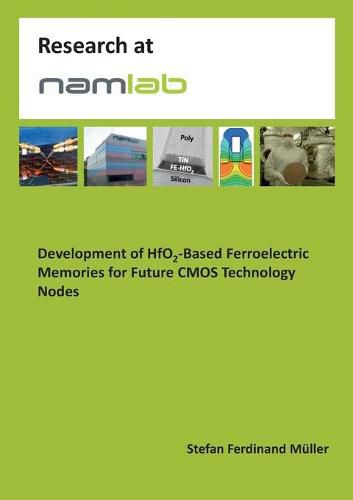Readings Newsletter
Become a Readings Member to make your shopping experience even easier.
Sign in or sign up for free!
You’re not far away from qualifying for FREE standard shipping within Australia
You’ve qualified for FREE standard shipping within Australia
The cart is loading…






This title is printed to order. This book may have been self-published. If so, we cannot guarantee the quality of the content. In the main most books will have gone through the editing process however some may not. We therefore suggest that you be aware of this before ordering this book. If in doubt check either the author or publisher’s details as we are unable to accept any returns unless they are faulty. Please contact us if you have any questions.
This thesis evaluates the viability of ferroelectric Si: HfO2 and its derived FeFET application for non-volatile data storage. At the beginning, the ferroelectric effect is explained briefly such that the applications that make use of it can be understood. Afterwards, the latest findings on ferroelectric HfO2 are reviewed and their potential impact on future applications is discussed. Experimental data is presented afterwards focusing on the ferroelectric material characteristics of Si: HfO2 that are most relevant for memory applications. Besides others, the stability of the ferroelectric switching effect could be demonstrated in a temperature range of almost 400 K. Moreover, nanosecond switching speed and endurance in the range of 1 million to 10 billion cycles could be proven. Retention and imprint characteristics have furthermore been analyzed and are shown to be stable for 1000 hours bake time at 125 DegreesC. Derived from the ferroelectric effect in HfO2, a 28 nm FeFET memory cell is introduced as the central application of this thesis. Based on numerical simulations, the memory concept is explained and possible routes towards an optimized FeFET cell are discussed. Subsequently, the results from electrical characterization of FeFET multi-structures are presented and discussed. By using Si: HfO2 it was possible to realize the world’s first 28 nm FeFET devices possessing i.a. 10k cycling endurance and an extrapolated 10 year data retention at room temperature. The next step towards a FeFET memory is represented by connecting several memory cells into matrix-type configurations. A cell concept study illustrates the different ways in which FeFET cells can be combined together to give high density memory arrays. For the proposed architectures, operational schemes are theoretically discussed and analyzed by both electrical characterization of FeFET multi-structures and numerical simulations. The thesis concludes with the electrical characterization of small FeFET memory arra
$9.00 standard shipping within Australia
FREE standard shipping within Australia for orders over $100.00
Express & International shipping calculated at checkout
This title is printed to order. This book may have been self-published. If so, we cannot guarantee the quality of the content. In the main most books will have gone through the editing process however some may not. We therefore suggest that you be aware of this before ordering this book. If in doubt check either the author or publisher’s details as we are unable to accept any returns unless they are faulty. Please contact us if you have any questions.
This thesis evaluates the viability of ferroelectric Si: HfO2 and its derived FeFET application for non-volatile data storage. At the beginning, the ferroelectric effect is explained briefly such that the applications that make use of it can be understood. Afterwards, the latest findings on ferroelectric HfO2 are reviewed and their potential impact on future applications is discussed. Experimental data is presented afterwards focusing on the ferroelectric material characteristics of Si: HfO2 that are most relevant for memory applications. Besides others, the stability of the ferroelectric switching effect could be demonstrated in a temperature range of almost 400 K. Moreover, nanosecond switching speed and endurance in the range of 1 million to 10 billion cycles could be proven. Retention and imprint characteristics have furthermore been analyzed and are shown to be stable for 1000 hours bake time at 125 DegreesC. Derived from the ferroelectric effect in HfO2, a 28 nm FeFET memory cell is introduced as the central application of this thesis. Based on numerical simulations, the memory concept is explained and possible routes towards an optimized FeFET cell are discussed. Subsequently, the results from electrical characterization of FeFET multi-structures are presented and discussed. By using Si: HfO2 it was possible to realize the world’s first 28 nm FeFET devices possessing i.a. 10k cycling endurance and an extrapolated 10 year data retention at room temperature. The next step towards a FeFET memory is represented by connecting several memory cells into matrix-type configurations. A cell concept study illustrates the different ways in which FeFET cells can be combined together to give high density memory arrays. For the proposed architectures, operational schemes are theoretically discussed and analyzed by both electrical characterization of FeFET multi-structures and numerical simulations. The thesis concludes with the electrical characterization of small FeFET memory arra